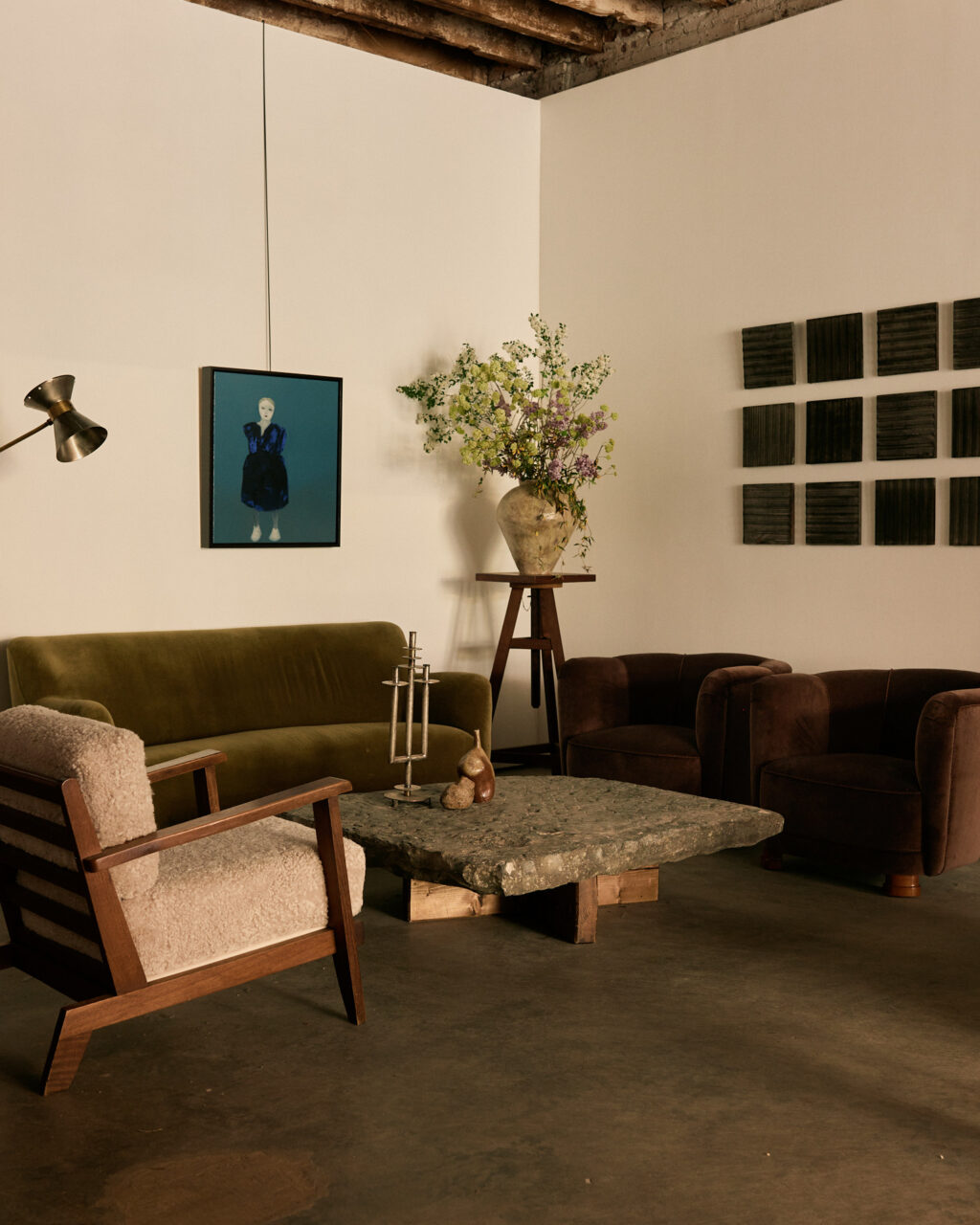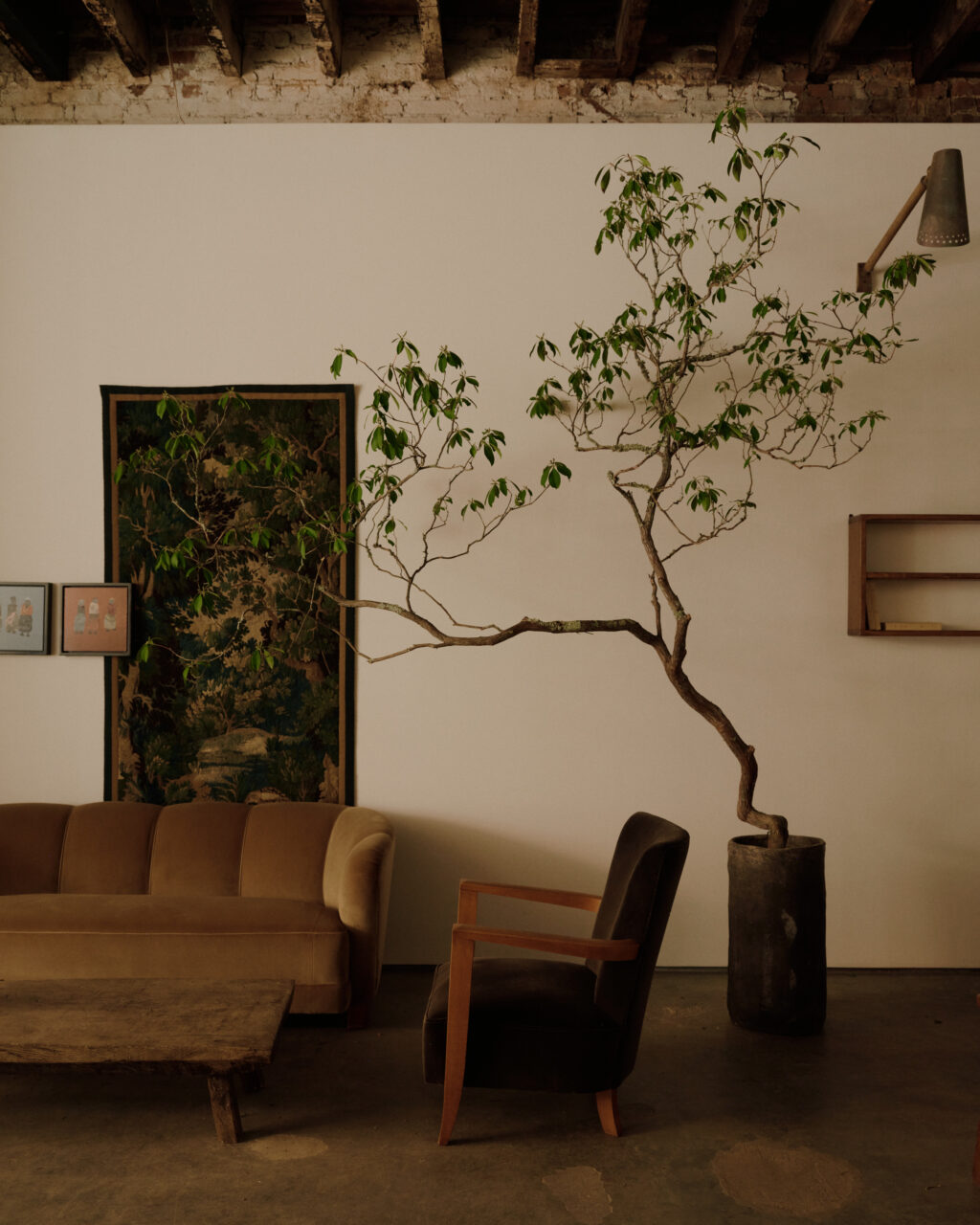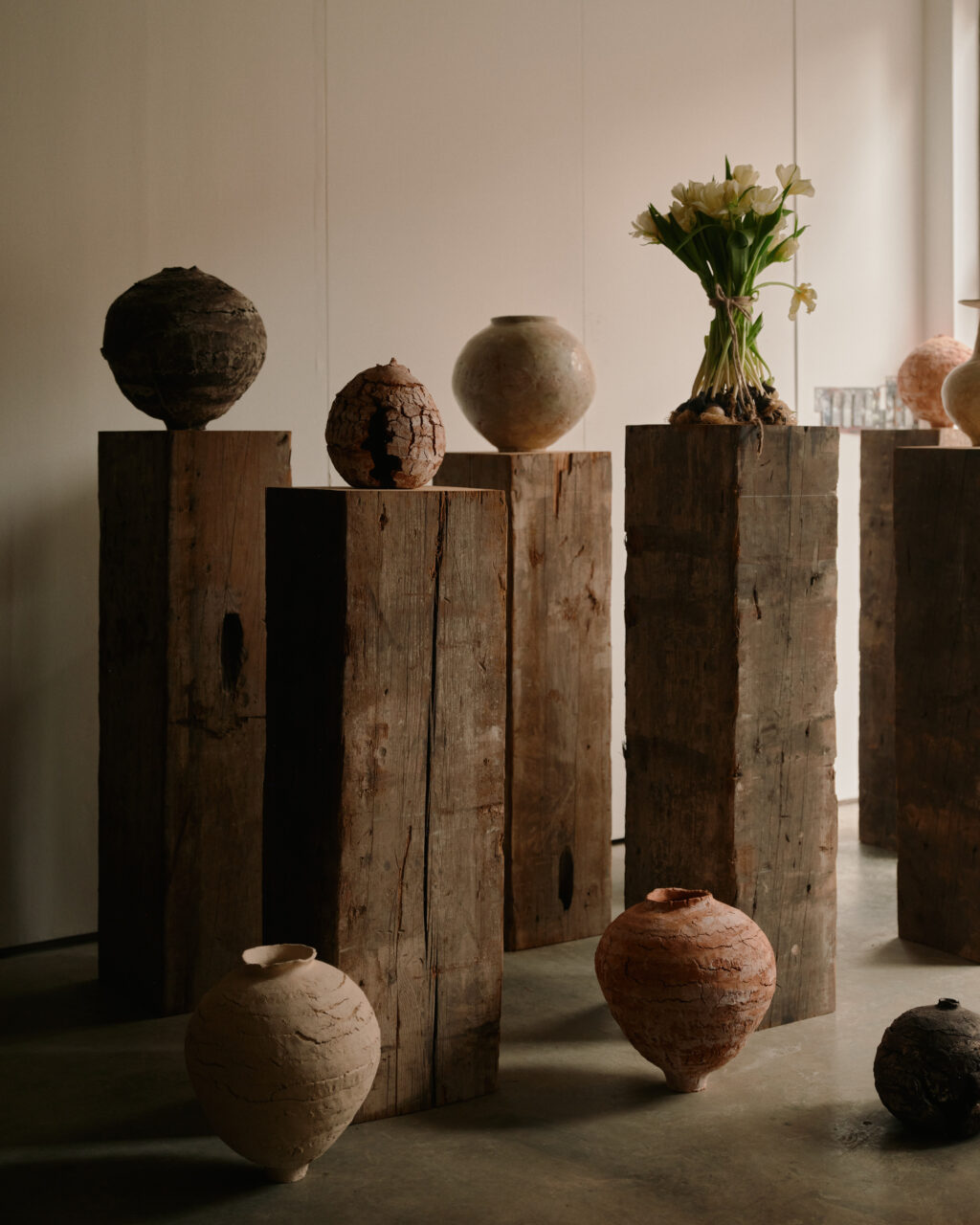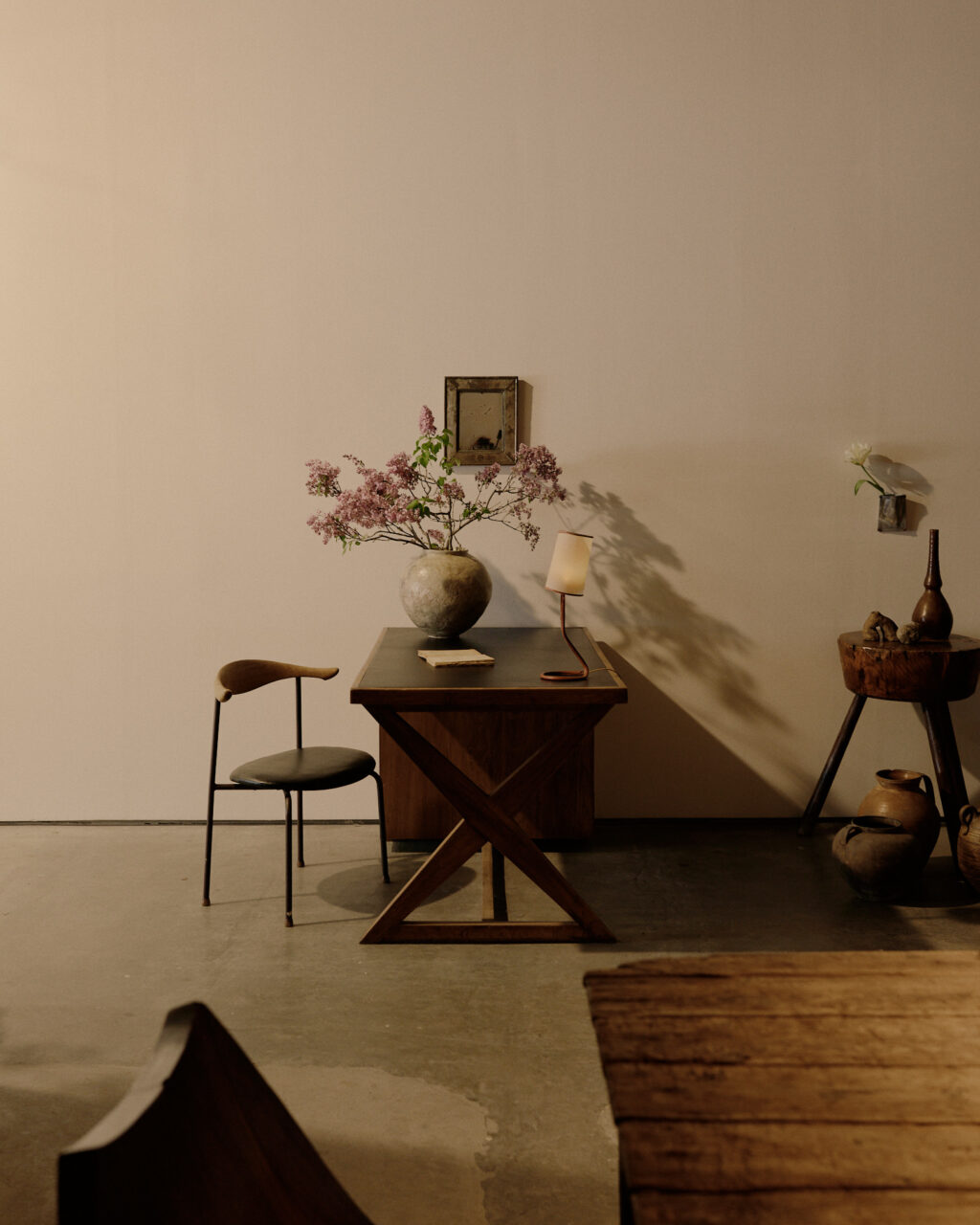What do you get when you mix an interior designer, a tech founder, and a chef? You’ll find the answer behind an unassuming storefront in Manhattan’s Lower East Side neighborhood. The latest addition to the New York collectible design scene, Galerie Was vends a mix of earthen-hued and forged art, furniture, and objects curated by Lauren Piscione of bicoastal interior design studio LP Creative, Andy McCune of Cosmos, and private chef Allie Fitzpatrick. Opening its doors on the occasion of New York Design Week, the gallery presented a healthy mix of antiques sourced from European flea markets and new works from a handful of young contemporary artists and designers.
This week, AN Interior sat down with the seemingly disparate trio to uncover the origin story of New York’s latest (and vibiest?) collectible design destination.
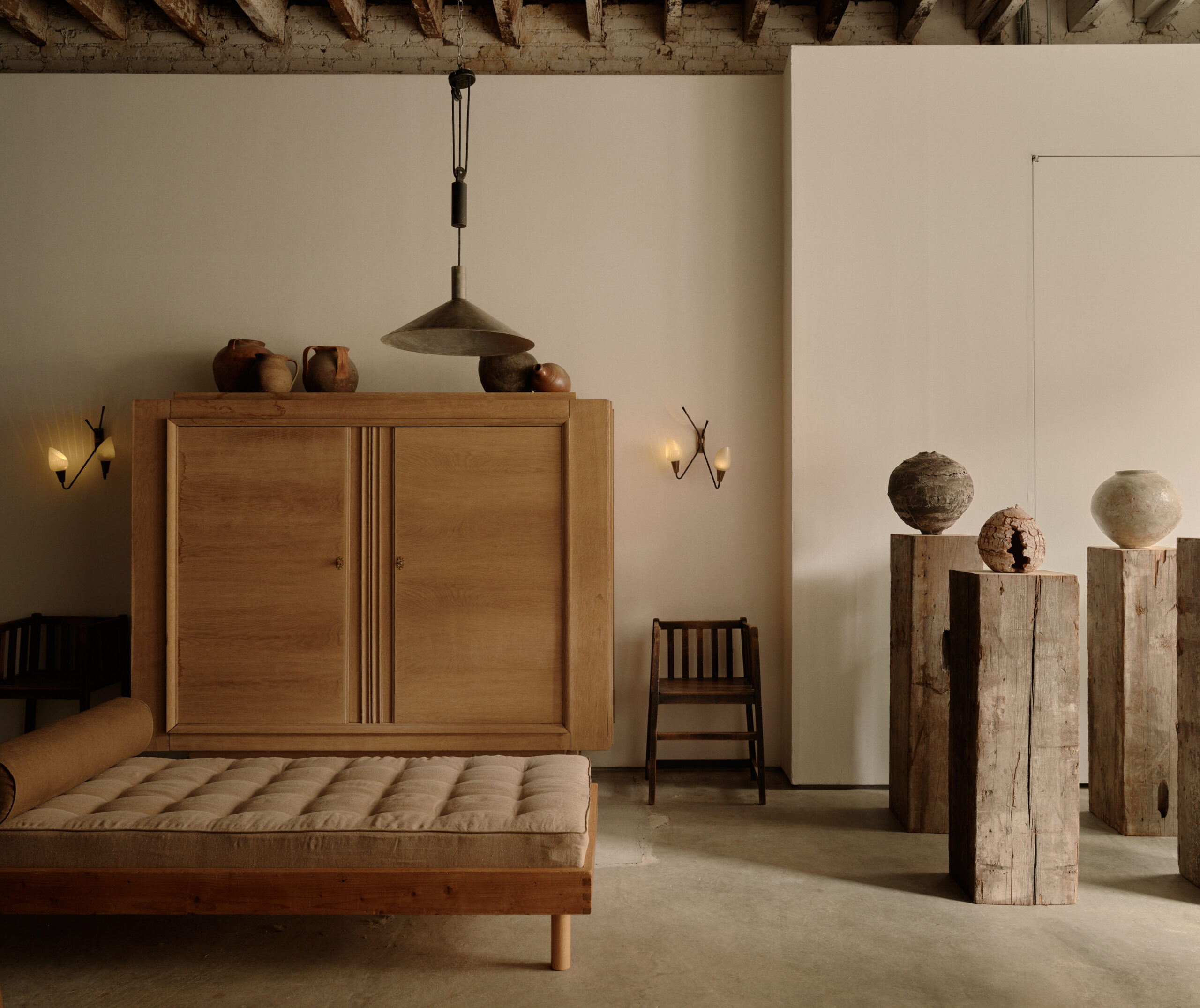
Sophie Aliece Hollis: How did the three of you come together to start this gallery?
Lauren Piscione: I was originally connected to Allie and Andy as their interior designer. We first started working together on their apartment in New York and, not long after, we also started on their home in the Hamptons. The Hamptons project ended up finishing a lot sooner than the apartment because we were determined to complete it in time for summer. When all was said and done, I realized that it was one of the best projects I had ever done, and I think that’s because there was such an incredible design synergy between Allie, Andy, and me. The work just flowed so easily, and through it we became fast friends.
In October, I bumped into them in Paris after my first-ever visit to the Paris flea market. I was on a sourcing trip, and I told them they had to join me the next day. After working with them, I knew how much they would love it. After our visit (and a few drinks), we were brimming with excitement and joked about going into business together. I don’t think any of us realized in that moment how real that would become. After that trip, I was following up like crazy and by December we were back in Paris. We had furniture in the states by January and in May we launched the gallery.
SAH: The gallery mixes new designs and antiques. Are these antiques primarily sourced from the Paris flea market or did you seek out other destinations?
LP: For this round, we were primarily focused on Paris and Belgium. We have plans to visit Switzerland and I’ve heard amazing things about the South of France. Another spot on the horizon is Japan. You can tell from both homes we designed together that we all share a very deep love and appreciation for Wabi Sabi design. We are very excited to incorporate that into the offerings at Galerie Was.
Allie Fitzpatrick: It’s a treat for us, too, to dive into sourcing from new, global destinations. The whole process feels like a giant treasure hunt.
SAH: How do the practicing artists you all represent complement these antiques and the overall ambition of the gallery?
LP: I think that the artists that we have brought into the gallery share our ethos and appreciation for things and practices of old. We represent a number of ceramicists, for example, who practice ancient method using ancient materials. The name itself, Galerie Was, is an ode to the things that were.
SAH: How many artists did you open the gallery with?
AF: We’re currently working with nine.
SAH: What does Galerie Was deliver to the New York design space that didn’t previously exist?
LP: As a bicoastal designer, I noticed that my options for sourcing beautiful antiques in L.A. were far greater than they were in New York. New York is amazing and obviously has everything, but I found myself having to go to many different places to find what I need—one piece here, one piece there. So, I think part of the mission of Galerie Was was to fill that void and create a one-stop-shop.
SAH: Galerie Was landed in the Lower East Side. Can you speak to the selection of this neighborhood and what it brings to the gallery?
Andy McCune: The space was originally selected to house my tech startup, Cosmos. But under that vision, we felt that it was being underutilized. We knew it could and should be much more than just an office. When I had originally found the space, I was looking more at the quality of the space itself rather than the location. If you asked me then what I was looking for, I would have told you concrete floors, white walls, exposed wooden beams, and a skylight. And we found all of those things at this unassuming venue in the Lower East Side under very wild circumstances that felt almost cosmic. Now having been in the neighborhood for a bit, the energy that’s building in the Lower East Side is so clear to me. It’s actually the first place that I lived in when I moved to New York 10 years ago. I hadn’t spent much time there since, but it’s wild to see now how much its changed. There aren’t many neighborhoods in downtown Manhattan where you still get that level of cultural melding. Within blocks of us there are pockets of so many different cultures: we have a Buddhist temple right next door, we have a beautiful gallery across the street, there’s a Mexican Bodega on this corner, a Chinese restaurant on the other. Something about it feels like a reflection of what we’re doing with the gallery—bringing together a mixture of ideas and cultures and crafts.
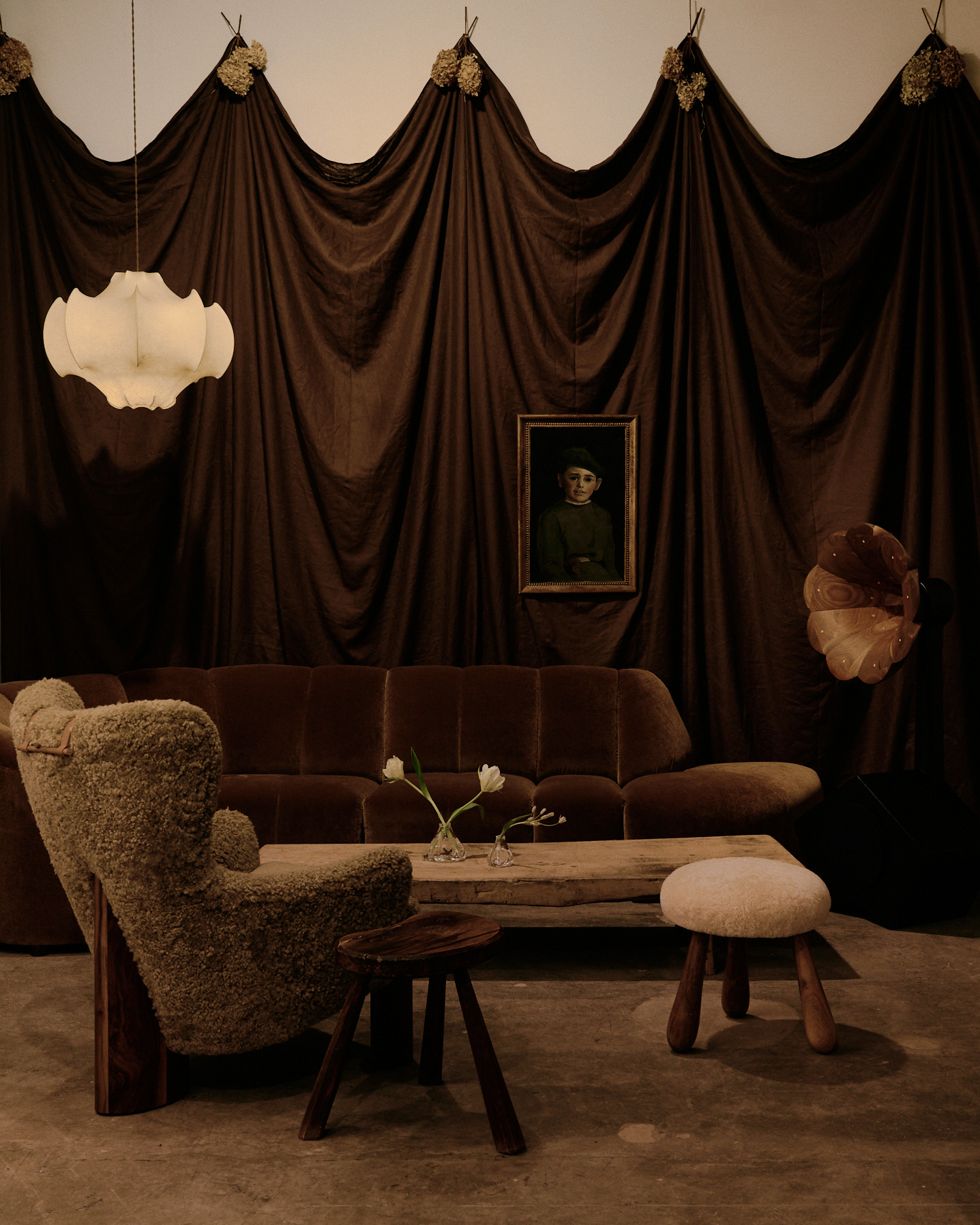
SAH: Can you speak to the design of the space?
LP: It’s funny because we toiled for a while over whether we should make any changes to the existing space. But, as Andy mentioned, it was nearly perfect to begin with. So, we decided to leave it largely as it was, an ode to the quintessential, stark New York City gallery. We did, however, put our spin on one wall by suspending and draping a big, beautiful, deep burgundy fabric. Aside from that, we feel that the existing space and the curated pieces can speak for themselves.


